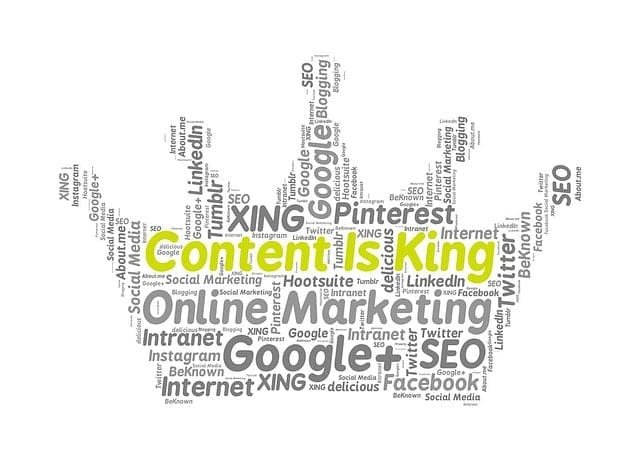This Article has been revised, edited and added to, by Poulomi Chakraborty.
- The Importance of Content Marketing in Healthcare
- Understanding Your Audience
- Crafting Compelling Content
- Leveraging Email Marketing
- Leveraging Social Media for Healthcare Content Marketing
- Creating High-Quality Healthcare Content
- Focusing on Quality and Accuracy
- Utilizing Expert Contributors
- Implementing Visual and Interactive Elements
- Writing with Clarity and Compassion
- Ensuring Accessibility and Inclusivity
- Promoting Content Through Various Channels
- Measuring and Analyzing Content Performance
- Adapting to Changing Trends and Needs
- Conclusion
In today’s digital age, content marketing has become an essential strategy for businesses across various industries, including healthcare. The healthcare industry, with its unique challenges and opportunities, requires a tailored approach to content marketing. Whether you’re a healthcare provider, a medical device manufacturer, or a health IT company, creating valuable and engaging content can help you build trust, educate your audience, and drive patient engagement. But how do you craft a content marketing strategy that resonates with your audience and stands out in a crowded digital landscape? Let’s dive in and explore best practices and tips for effective content marketing in the healthcare industry.
The Importance of Content Marketing in Healthcare

Content marketing plays a crucial role in the healthcare industry for several reasons. Firstly, it helps establish trust and credibility. Patients and healthcare consumers are increasingly turning to the internet for health information, and they seek reliable sources to guide their decisions.
By providing accurate, informative, and accessible content, healthcare organizations can position themselves as trusted authorities.
Moreover, content marketing is a powerful tool for patient education. Healthcare is a complex field, and patients often need clear and understandable information about conditions, treatments, and preventive care.
High-quality content can help demystify medical jargon, explain procedures, and provide valuable insights into managing health and wellness.
Comparing Content Marketing in Healthcare vs. Other Industries
Content marketing strategies in healthcare differ significantly from those in other industries, such as retail or entertainment. In retail, for instance, the focus is often on showcasing products and driving immediate sales. Content might include product descriptions, user reviews, and promotional offers. The goal is to convert visitors into buyers quickly.
In contrast, content marketing in healthcare prioritizes education and trust-building over direct sales. Healthcare decisions are typically more complex and involve higher stakes than purchasing consumer goods.
Patients are not just looking for a product; they need reassurance, detailed information, and empathy. Therefore, the content must be comprehensive, accurate, and sensitive to the emotional and informational needs of the audience.
Furthermore, the regulatory environment in healthcare adds another layer of complexity. Content must adhere to strict guidelines to ensure accuracy and compliance with laws such as the Health Insurance Portability and Accountability Act (HIPAA). This contrasts with industries like entertainment, where content can be more creative and less regulated.
Long-Term Relationships vs. Immediate Gratification
Another key difference lies in the nature of customer relationships. In many industries, content marketing aims for quick wins and immediate gratification. For example, in the fashion industry, a compelling blog post or social media campaign can quickly translate into sales as consumers make spontaneous purchasing decisions.
In healthcare, however, the focus is on building long-term relationships. Patients might take months or even years to decide on a healthcare provider or treatment option.
Therefore, content marketing efforts need to be sustained and consistent, gradually nurturing trust and loyalty. The goal is to be the go-to resource for health information so that when patients are ready to make a decision, they turn to you.
Personalization and Privacy
Personalization is a powerful tool in content marketing, enabling businesses to deliver tailored messages that resonate with individual consumers. In many industries, leveraging customer data for personalized marketing is straightforward and highly effective.
In healthcare, personalization must be approached with caution due to privacy concerns. Healthcare marketers must balance the benefits of personalized content with the need to protect patient privacy.
Ensuring compliance with HIPAA and other regulations is paramount. This means that while personalization can enhance engagement, it must be done ethically and transparently, ensuring that patient data is handled with the utmost care.
The Role of Storytelling
Storytelling is a universal content marketing tactic, but its role is particularly profound in healthcare. Stories of patient experiences, success stories of treatments, and narratives from healthcare professionals can humanize the healthcare experience, making it more relatable and understandable.
In contrast, storytelling in other industries, such as technology, might focus more on innovation, product features, or user testimonials. While effective, these stories typically do not carry the same emotional weight as those in healthcare.
In healthcare, stories can inspire, provide hope, and connect with audiences on a deeply personal level, driving engagement and loyalty.
Content Types and Formats
The types of content that resonate can also vary significantly between healthcare and other industries. In retail, visually appealing content like high-quality images, videos, and infographics are crucial for showcasing products. User-generated content and social media reviews also play a significant role in influencing purchasing decisions.
In healthcare, while visual content is still important, there is a greater emphasis on detailed, text-based content such as blog posts, white papers, and case studies. Videos and infographics are used to explain complex medical information in a digestible format. Webinars and podcasts featuring medical experts can also be highly effective, providing in-depth knowledge and fostering a sense of trust.
Understanding Your Audience

Identifying Your Target Audience
Effective content marketing starts with a deep understanding of your target audience. In the healthcare industry, this can include patients, caregivers, healthcare professionals, and even regulatory bodies.
Each group has unique needs and concerns that your content must address. For example, patients might be looking for information on symptoms and treatments, while healthcare professionals might be interested in the latest research and best practices.
To identify your target audience, start by segmenting your market based on demographics, psychographics, and behaviors. Consider factors such as age, gender, health conditions, and treatment preferences.
Use tools like surveys, interviews, and analytics to gather insights into their needs, preferences, and pain points. This data will help you create content that resonates with each segment and addresses their specific concerns.
Creating Detailed Audience Personas
Once you’ve identified your target audience, creating detailed audience personas can provide a clearer picture of who you’re speaking to. Audience personas are fictional representations of your ideal customers, based on real data and insights. They include demographic details, goals, challenges, and content preferences.
For example, one persona might be “Sarah,” a 45-year-old woman managing chronic pain who frequently searches for non-invasive treatment options and tips for managing her condition.
Another persona might be “Dr. John,” a 50-year-old orthopedic surgeon interested in the latest advancements in joint replacement surgery. Creating these personas helps you tailor your content to meet the specific needs and preferences of each audience segment, ensuring your messages are relevant and engaging.
Mapping the Patient Journey
Understanding the patient journey is crucial for creating content that guides your audience through each stage of their healthcare experience. The patient journey typically includes stages such as awareness, consideration, decision, treatment, and post-treatment. Each stage presents unique opportunities to engage and support your audience with relevant content.
During the awareness stage, potential patients are just beginning to recognize a health issue. At this point, they need educational content that provides basic information about symptoms, conditions, and potential treatments.
As they move to the consideration stage, they start comparing treatment options and healthcare providers. Here, content like case studies, testimonials, and detailed guides can help them make informed decisions.
In the decision stage, patients are ready to choose a healthcare provider or treatment plan. Providing clear, concise, and reassuring information about your services, including credentials, success rates, and patient reviews, can help build trust and confidence.
During the treatment stage, support your patients with content that explains the treatment process, what to expect, and how to prepare.
Finally, in the post-treatment stage, continue to engage your patients with follow-up care tips, wellness advice, and resources for managing their health. By mapping the patient journey and creating content tailored to each stage, you can provide continuous support and build lasting relationships with your audience.
Utilizing Data-Driven Insights
Leveraging data-driven insights is essential for refining your content marketing strategy and ensuring it meets the needs of your audience. Use analytics tools to track how your content is performing and gain insights into what resonates with your audience.
Monitor metrics such as page views, time spent on page, bounce rates, and conversion rates to understand how users are engaging with your content.
Additionally, pay attention to social media metrics, such as likes, shares, comments, and mentions, to gauge the impact of your content on different platforms. Use this data to identify trends, preferences, and areas for improvement.
For example, if you notice that blog posts on specific health conditions receive more engagement, consider creating more content on those topics.
Data-driven insights can also help you personalize your content. By understanding your audience’s behavior and preferences, you can tailor your messages and deliver relevant content that meets their needs. Personalization can significantly enhance engagement and build stronger connections with your audience.
Building Trust Through Transparency
In the healthcare industry, trust is paramount. Patients need to feel confident that the information they receive is accurate, reliable, and trustworthy. Building trust through transparency is a key component of successful content marketing.
Ensure that all your content is evidence-based and backed by credible sources. Clearly cite studies, research, and expert opinions to support your claims. Avoid making exaggerated or unverified statements, as these can erode trust and damage your reputation.
Additionally, be transparent about your affiliations, sponsorships, and partnerships. If you’re promoting a product or service, disclose any financial relationships or endorsements. This transparency builds credibility and fosters trust with your audience.
Crafting Compelling Content

Creating Educational and Informative Content
Educational and informative content is the cornerstone of effective content marketing in the healthcare industry. Patients and healthcare consumers are constantly seeking reliable information to make informed decisions about their health. As a healthcare organization, your goal is to provide valuable, evidence-based content that addresses their questions and concerns.
Start by identifying common questions and topics of interest within your niche. This can be done through keyword research, patient surveys, and analyzing frequently asked questions.
Once you have a list of topics, create content that is detailed, accurate, and easy to understand. Use clear, simple language and avoid medical jargon whenever possible. Visual aids such as infographics, charts, and diagrams can help explain complex information.
Blog posts, articles, and white papers are excellent formats for delivering in-depth educational content. These long-form pieces allow you to explore topics comprehensively and provide detailed explanations.
For instance, a blog post on managing diabetes can cover everything from symptoms and treatment options to lifestyle changes and dietary tips.
Leveraging Multimedia Content
Multimedia content can enhance engagement and make your information more accessible to a broader audience. Videos, podcasts, and interactive tools offer dynamic ways to present information and engage with your audience.
Videos are particularly effective for demonstrating procedures, explaining complex concepts, and sharing patient stories. They provide a visual and auditory learning experience, making it easier for viewers to grasp the information.
For example, a video explaining how to use a medical device can include step-by-step instructions and visual demonstrations, which are more effective than text alone.
Podcasts are another powerful tool for reaching your audience. They offer a convenient way for people to consume content while on the go, whether during their commute, exercise, or downtime. Hosting interviews with healthcare professionals, discussing the latest medical research, and providing health tips are some ways to use podcasts effectively.
Interactive tools, such as quizzes, symptom checkers, and calculators, can also engage your audience and provide personalized information. These tools allow users to input their data and receive tailored insights, making the information more relevant and actionable.
Telling Engaging Stories
Storytelling is a powerful technique for connecting with your audience on an emotional level. In the healthcare industry, stories of patient experiences, recovery journeys, and healthcare professionals’ dedication can inspire, educate, and build trust.
When crafting stories, focus on authenticity and relatability. Share real-life experiences that your audience can connect with. For instance, a patient story about overcoming a chronic illness can provide hope and encouragement to others facing similar challenges. Include quotes, photos, and videos to bring these stories to life.
Highlighting the human side of healthcare can also make your content more engaging. Share behind-the-scenes stories of your healthcare team, their motivations, and the care they provide. These narratives humanize your brand and demonstrate your commitment to patient care.
Optimizing Content for SEO
Search engine optimization (SEO) is essential for ensuring your content reaches a wider audience. By optimizing your content for search engines, you can improve your visibility and attract more organic traffic to your website.
Start with thorough keyword research to identify the terms and phrases your audience is searching for. Use tools like Google Keyword Planner, SEMrush, or Ahrefs to find relevant keywords with high search volume and low competition. Incorporate these keywords naturally into your content, including titles, headings, and throughout the body text.
Optimize your meta descriptions, image alt texts, and URLs to include target keywords. Ensure your content is well-structured with clear headings, subheadings, and bullet points for easy readability. Internal linking to related content on your website can also improve SEO and keep visitors engaged.
Creating high-quality, authoritative content that answers your audience’s questions and provides value will naturally attract backlinks and improve your search engine rankings. Regularly updating your content to reflect the latest research and medical guidelines ensures it remains relevant and authoritative.
Utilizing Social Media for Distribution
Social media platforms are powerful channels for distributing your content and engaging with your audience. Each platform offers unique opportunities to reach different segments of your audience and promote your content effectively.
Identify the social media platforms where your target audience is most active. For instance, Facebook and Instagram are popular among a broad demographic, while LinkedIn is more suited for professional audiences, including healthcare professionals and industry experts.
Create a content calendar to plan and schedule your posts, ensuring a consistent presence on social media. Share a mix of content, including blog posts, videos, infographics, and patient stories, to keep your audience engaged. Use social media analytics to track the performance of your posts and understand what types of content resonate most with your audience.
Engage with your followers by responding to comments, answering questions, and participating in discussions. Social media is also a valuable tool for gathering feedback and insights from your audience, which can inform your content strategy and improve your offerings.
Building a Strong Brand Voice
A strong brand voice is essential for creating a consistent and recognizable presence in the healthcare industry. Your brand voice should reflect your organization’s values, mission, and the unique qualities that set you apart.
Define your brand voice by considering your target audience and the type of relationship you want to build with them. Are you aiming for a professional and authoritative tone, or a more friendly and approachable one? Ensure that your brand voice is consistent across all your content and communication channels, including your website, social media, and marketing materials.
For example, if your brand focuses on pediatric care, a warm and comforting tone may be more appropriate to connect with parents and children. On the other hand, a research-focused healthcare organization might adopt a more formal and academic tone to convey expertise and credibility.

Leveraging Email Marketing
Building an Email List
Building an email list is a foundational step in leveraging email marketing for the healthcare industry. An email list allows you to reach your audience directly with valuable content, updates, and offers. For startup founders, focusing on ethical and compliant ways to grow your email list is crucial.
Begin by offering valuable content that encourages visitors to subscribe. This can include eBooks, whitepapers, webinars, or exclusive health tips. Ensure that your signup forms are easily accessible on your website, blog, and social media channels. Highlight the benefits of subscribing, such as receiving the latest health news, expert advice, or exclusive content.
Always adhere to privacy laws and regulations, such as HIPAA and GDPR. Be transparent about how you will use subscribers’ information, and provide clear options for opting out. Building trust through transparency will encourage more people to join your list and engage with your content.
Crafting Engaging Email Campaigns
Crafting engaging email campaigns involves creating content that resonates with your audience and prompts them to take action. For startup founders, the key is to deliver valuable and relevant content that addresses the needs and interests of your subscribers.
Start by segmenting your email list based on demographics, health conditions, or interests. This allows you to send targeted content that is more likely to be relevant and engaging. For example, you can create separate campaigns for patients with chronic conditions, new parents, or healthcare professionals.
Personalize your emails to make them more engaging. Use the subscriber’s name, reference their specific interests, and tailor the content to their needs. Personalization shows that you understand and care about your audience, which can significantly increase engagement rates.
Include a clear call-to-action (CTA) in your emails. Whether you want subscribers to read a blog post, download a resource, book an appointment, or share the content, make the CTA clear and compelling. Use action-oriented language and ensure that the CTA stands out visually.
Analyzing Email Performance
Analyzing the performance of your email campaigns is essential for understanding what works and what doesn’t. For startup founders, using data-driven insights to refine your email marketing strategy can lead to better engagement and higher conversion rates.
Monitor key metrics such as open rates, click-through rates (CTR), conversion rates, and unsubscribe rates. Open rates indicate how well your subject lines and preview text are performing, while CTR shows how engaging your email content and CTAs are. Conversion rates measure the effectiveness of your campaigns in driving desired actions, and unsubscribe rates can highlight issues with content relevance or frequency.
A/B testing can help you optimize your emails by comparing different versions to see which performs better. Test various elements such as subject lines, email designs, CTAs, and sending times. Use the insights from these tests to continually improve your email campaigns and better meet the needs of your audience.
Providing Value with Newsletters
Newsletters are an effective way to keep your audience informed and engaged. For startup founders, a well-crafted newsletter can strengthen relationships with your audience and position your brand as a trusted source of health information.
Create a consistent schedule for your newsletters, whether it’s weekly, bi-weekly, or monthly. Consistency helps build anticipation and keeps your audience engaged. Include a mix of content such as educational articles, patient stories, health tips, updates on your services, and links to your latest blog posts or videos.
Focus on providing value in every newsletter. Ensure that the content is relevant, informative, and actionable. Highlight important news, share expert insights, and offer practical advice that your audience can apply to their daily lives. Providing valuable content consistently will help build trust and loyalty among your subscribers.
Integrating Email with Other Marketing Channels
Integrating email marketing with other marketing channels can amplify your reach and impact. For startup founders, a multi-channel approach ensures that your message is consistent and reinforces your brand across different touchpoints.
Promote your email content on social media to reach a broader audience and encourage new subscribers. Share excerpts from your newsletters, link to your latest email campaigns, and use social media ads to drive email signups. Similarly, use your email list to promote your social media channels, encouraging subscribers to follow you for more updates and engagement.
Leverage your website and blog to support your email marketing efforts. Use pop-up forms, embedded sign-up boxes, and call-to-action buttons to capture email addresses. Highlight the benefits of subscribing and provide a clear value proposition.
Maintaining Compliance and Security
Maintaining compliance with privacy laws and ensuring the security of your subscribers’ information is paramount in healthcare email marketing. For startup founders, this means implementing robust data protection measures and adhering to legal requirements.
Ensure that your email marketing practices comply with laws such as HIPAA, GDPR, and CAN-SPAM. Obtain explicit consent from subscribers before sending emails, and provide clear opt-out options. Regularly update your privacy policy and inform subscribers about how their data will be used and protected.
Implement security measures to protect your email list from unauthorized access and data breaches. Use secure email marketing platforms, regularly update your software, and train your team on best practices for data security. Building a reputation for reliability and trustworthiness will enhance your brand’s credibility and foster long-term relationships with your audience.
Leveraging Social Media for Healthcare Content Marketing

Choosing the Right Platforms
Selecting the right social media platforms is crucial for effective healthcare content marketing. Each platform has its unique user demographics and engagement styles, making it important to choose the ones that best align with your target audience. For startup founders, understanding where your audience spends their time online can guide your social media strategy.
Facebook, for instance, has a broad user base and is ideal for sharing detailed content, patient stories, and engaging in community discussions. Instagram, with its visual-centric approach, is perfect for sharing health tips, infographics, and behind-the-scenes glimpses into your practice. LinkedIn is valuable for reaching healthcare professionals and sharing industry insights, research, and professional achievements.
Creating Engaging and Compliant Content
Creating engaging content for social media while adhering to healthcare regulations requires a strategic approach. For startup founders, this means balancing creativity with compliance to ensure your content is both captivating and lawful.
Visual content tends to perform well on social media. Share high-quality images, infographics, and videos to capture attention. For instance, you can create short videos that provide health tips, demonstrate medical procedures, or feature patient testimonials. Infographics can simplify complex medical information, making it accessible and engaging.
When creating content, ensure it complies with HIPAA and other relevant regulations. Avoid sharing any personal health information without explicit consent, and always obtain necessary permissions before featuring patients or staff. Use disclaimers where appropriate and provide accurate, evidence-based information to maintain credibility and trust.
Building a Community
Building a community on social media involves more than just posting content; it requires active engagement and fostering meaningful connections. For startup founders, nurturing a community can lead to increased loyalty and advocacy for your brand.
Respond promptly to comments and messages, showing that you value your audience’s input and concerns. Engage in conversations by asking questions, sharing user-generated content, and participating in relevant discussions. For example, you can host live Q&A sessions with healthcare professionals, allowing your audience to ask questions and receive real-time answers.
Encourage your followers to share their health journeys, experiences, and successes. Highlighting these stories not only provides valuable insights but also fosters a sense of belonging and support among your community members.
Using Social Media for Patient Education
Social media is a powerful tool for patient education, allowing you to share valuable health information with a wide audience. For startup founders, focusing on educational content can position your brand as a trusted source of health knowledge.
Share tips on preventive care, explain medical conditions and treatments, and debunk common health myths. Use a mix of content formats, such as posts, stories, videos, and live sessions, to keep your audience engaged. For example, a weekly “Health Tip Tuesday” post can provide practical advice on maintaining wellness, while a monthly live session with a healthcare expert can delve deeper into specific health topics.
Leverage social media analytics to understand what types of educational content resonate most with your audience. Track metrics such as engagement rates, shares, and comments to gauge the effectiveness of your posts and adjust your strategy accordingly.
Promoting Healthcare Services and Events
Social media is an effective platform for promoting your healthcare services and events. For startup founders, using targeted campaigns can drive awareness and engagement for your offerings.
Create compelling posts that highlight your services, such as new treatment options, wellness programs, or telehealth consultations. Use visuals, patient testimonials, and success stories to illustrate the benefits and outcomes of your services. Ensure that your posts include clear calls-to-action, such as booking an appointment or visiting your website for more information.
Promote upcoming events, such as health fairs, webinars, or workshops, through your social media channels. Use event pages, countdowns, and reminders to generate excitement and encourage participation. Collaborate with influencers or partners to expand your reach and attract a broader audience.
Measuring Social Media Success
Measuring the success of your social media efforts is essential for refining your strategy and achieving your goals. For startup founders, focusing on key performance indicators (KPIs) can provide valuable insights into your social media performance.
Track metrics such as reach, engagement, click-through rates, and conversions to understand how your content is performing. Use social media analytics tools to monitor these metrics and identify trends. For instance, if you notice that posts about specific health topics receive higher engagement, consider creating more content around those topics.
Analyze the demographics of your audience to ensure your content aligns with their interests and needs. Use this data to refine your targeting and messaging, ensuring that your content resonates with the right people.
Regularly review your social media strategy and make adjustments based on your insights. Experiment with different types of content, posting times, and engagement tactics to find what works best for your audience.
Integrating Social Media with Other Marketing Channels
Integrating your social media efforts with other marketing channels can amplify your reach and impact. For startup founders, a cohesive multi-channel strategy ensures consistent messaging and maximizes the effectiveness of your campaigns.
Promote your social media content through your email newsletters, encouraging subscribers to follow you for more updates and engagement. Share links to your social media profiles on your website and include social media icons in your email signatures and marketing materials.
Cross-promote your content across different platforms. For example, share snippets of your blog posts or podcast episodes on social media, directing followers to your website for the full content. Similarly, use social media to drive traffic to your webinars, events, or special promotions.
Collaborate with influencers, partners, and other brands to expand your reach and attract new followers. Joint campaigns, guest posts, and social media takeovers can introduce your brand to new audiences and create valuable partnerships.
Creating High-Quality Healthcare Content

Focusing on Quality and Accuracy
In the healthcare industry, the quality and accuracy of your content are paramount. For startup founders, ensuring that your content is reliable and evidence-based is essential for building trust and credibility with your audience.
Begin by sourcing information from reputable medical journals, healthcare institutions, and industry experts. Always cross-check your facts and cite your sources to enhance the credibility of your content. Avoid using outdated information, and regularly update your content to reflect the latest research and medical guidelines.
Employing a professional editorial process can further ensure the quality of your content. Have medical experts review your content before publication to verify its accuracy. This process not only helps maintain high standards but also adds an additional layer of credibility to your content.
Utilizing Expert Contributors
Incorporating insights from healthcare professionals and industry experts can significantly enhance the value of your content. For startup founders, collaborating with expert contributors can provide authoritative perspectives and deepen your audience’s trust in your brand.
Invite healthcare professionals to contribute guest articles, participate in interviews, or co-host webinars and podcasts. Highlight their credentials and expertise to reinforce the credibility of their contributions. These expert insights can offer valuable information and provide a unique angle that differentiates your content from competitors.
Additionally, featuring expert contributors can expand your reach. Healthcare professionals often have their own networks and followers who may be interested in your content. Promoting these collaborations on social media and other channels can attract new audiences and increase engagement.
Implementing Visual and Interactive Elements
Visual and interactive elements can make your healthcare content more engaging and easier to understand. For startup founders, incorporating these elements can enhance user experience and improve content retention.
Infographics are particularly effective for presenting complex information in a visually appealing format. Use infographics to illustrate statistics, explain medical procedures, or compare treatment options. Ensure that your designs are clear, professional, and aligned with your brand’s visual identity.
Videos are another powerful tool for engaging your audience. Create educational videos that explain medical concepts, demonstrate exercises or procedures, and share patient testimonials. Use high-quality visuals and professional narration to ensure your videos are informative and captivating.
Interactive content, such as quizzes, calculators, and assessments, can also engage your audience and provide personalized insights. For example, a symptom checker tool can help users understand their health concerns and encourage them to seek further information or consultation.
Writing with Clarity and Compassion
Effective healthcare content must be clear, concise, and compassionate. For startup founders, this means writing in a way that is both informative and empathetic, addressing the needs and emotions of your audience.
Use plain language and avoid medical jargon whenever possible. Explain complex terms and concepts in simple words, and provide examples to illustrate your points. This approach ensures that your content is accessible to a broad audience, including those without a medical background.
Show empathy and understanding in your writing. Acknowledge the concerns and challenges that your audience may be facing, and offer supportive and reassuring information. For example, when discussing a chronic illness, emphasize that they are not alone and provide resources for support and management.
Include practical advice and actionable tips that your audience can apply to their daily lives. For instance, a blog post on managing stress could include relaxation techniques, lifestyle changes, and links to helpful resources. Providing actionable content empowers your audience and enhances their trust in your brand.
Ensuring Accessibility and Inclusivity
Making your content accessible and inclusive is crucial for reaching a diverse audience. For startup founders, prioritizing accessibility can broaden your reach and ensure that all users can benefit from your content.
Use inclusive language that respects and acknowledges different backgrounds, identities, and experiences. Avoid assumptions and stereotypes, and strive to create content that is relevant to a diverse audience. This approach not only fosters inclusivity but also enhances the relatability and impact of your content.
Ensure that your content is accessible to people with disabilities. Use clear headings, alt text for images, and descriptive links to improve navigation for screen readers. Provide transcripts for videos and captions for audio content to ensure that all users can access and understand your material.
Promoting Content Through Various Channels
Effective promotion is essential for maximizing the reach and impact of your healthcare content. For startup founders, leveraging multiple channels can ensure that your content reaches a wider audience and drives engagement.
Use your website and blog as the primary platforms for publishing your content. Optimize your website for SEO to attract organic traffic and make it easy for users to find your content. Share your blog posts and articles on social media to increase visibility and encourage sharing.
Email marketing is another powerful channel for promoting your content. Send regular newsletters featuring your latest content, and include personalized recommendations based on subscriber preferences. Use compelling subject lines and preview text to increase open rates and engagement.
Collaborate with influencers and industry partners to expand your reach. Guest posts, co-authored articles, and joint webinars can introduce your content to new audiences and enhance your credibility. Promote these collaborations on your social media channels and website to maximize exposure.
Measuring and Analyzing Content Performance
Measuring and analyzing the performance of your healthcare content is crucial for refining your strategy and achieving your goals. For startup founders, using data-driven insights can inform your content creation and promotion efforts.
Use analytics tools to track key metrics such as page views, time on page, bounce rates, and conversion rates. These metrics can provide insights into how users are engaging with your content and identify areas for improvement. For example, high bounce rates may indicate that your content is not meeting user expectations, while high conversion rates suggest that your CTAs are effective.
Monitor social media metrics, such as likes, shares, comments, and mentions, to gauge the impact of your content on different platforms. Use this data to understand what types of content resonate most with your audience and adjust your strategy accordingly.
Conduct regular content audits to assess the quality and relevance of your material. Identify outdated or underperforming content and update it with fresh information and new insights. This process ensures that your content remains accurate, relevant, and valuable to your audience.
Adapting to Changing Trends and Needs
The healthcare industry is constantly evolving, and staying ahead of trends is essential for effective content marketing. For startup founders, being adaptable and responsive to changing needs can enhance your relevance and impact.
Stay informed about the latest developments in healthcare, including new research, technologies, and industry standards. Use this knowledge to create timely and relevant content that addresses current issues and trends. For example, during a public health crisis, provide accurate and up-to-date information to help your audience navigate the situation.
Regularly solicit feedback from your audience to understand their evolving needs and preferences. Use surveys, social media polls, and direct interactions to gather insights and adjust your content strategy accordingly. Being responsive to your audience’s feedback shows that you value their input and are committed to providing relevant and useful information.
Conclusion
Content marketing in the healthcare industry requires a strategic, thoughtful approach that prioritizes accuracy, empathy, and engagement. By understanding your audience, creating high-quality and informative content, leveraging multimedia and social media, and maintaining compliance with regulations, you can build trust and establish your brand as a reliable source of health information.
Focus on long-term relationships, providing ongoing value, and adapting to evolving trends and needs. This approach not only fosters trust and loyalty but also drives meaningful engagement and growth. For startup founders, these best practices and tips can serve as a foundation for successful content marketing, helping you connect with your audience and make a lasting impact in the healthcare industry.
Read Next
- Influencer Marketing in the Age of Privacy Concerns: Ensuring Compliance and Building Trust
- The Importance of A/B Testing in Influencer Marketing: Optimizing for Maximum Impact
- Influencer Marketing for the Home and Living Sector: Collaborating with Lifestyle Influencers
- The Role of Interactive Content in Enhancing Influencer Marketing Campaigns
- Influencer Marketing for the Finance Sector: Collaborating with Financial Experts






















Comments are closed.